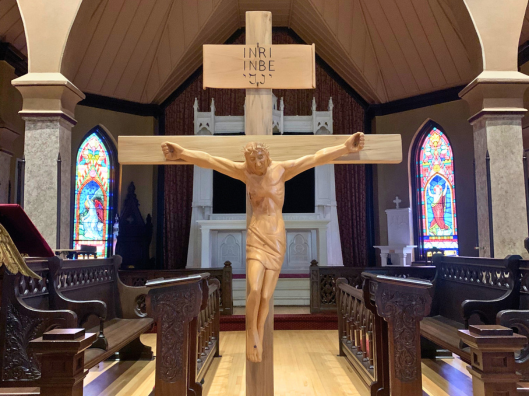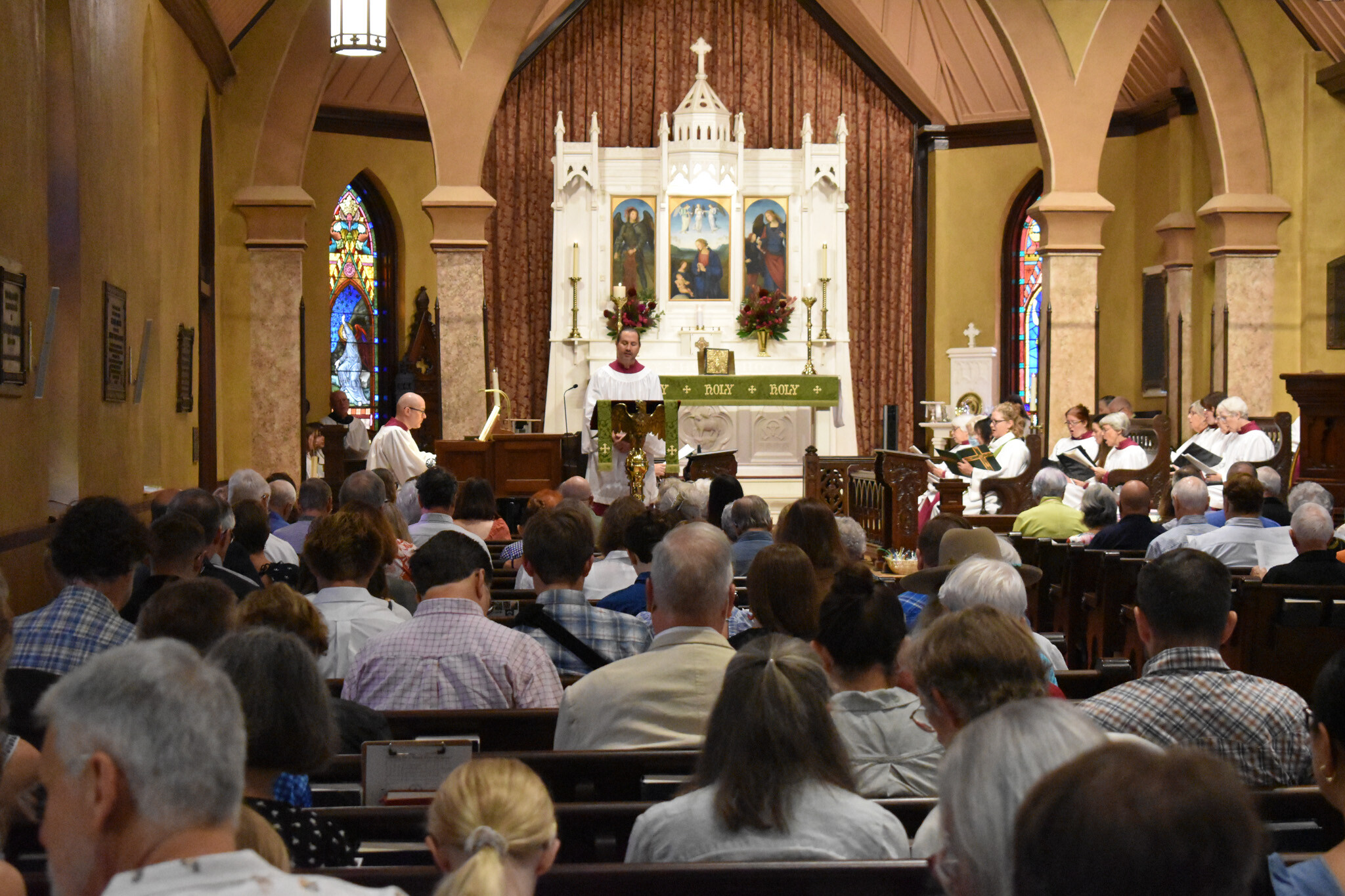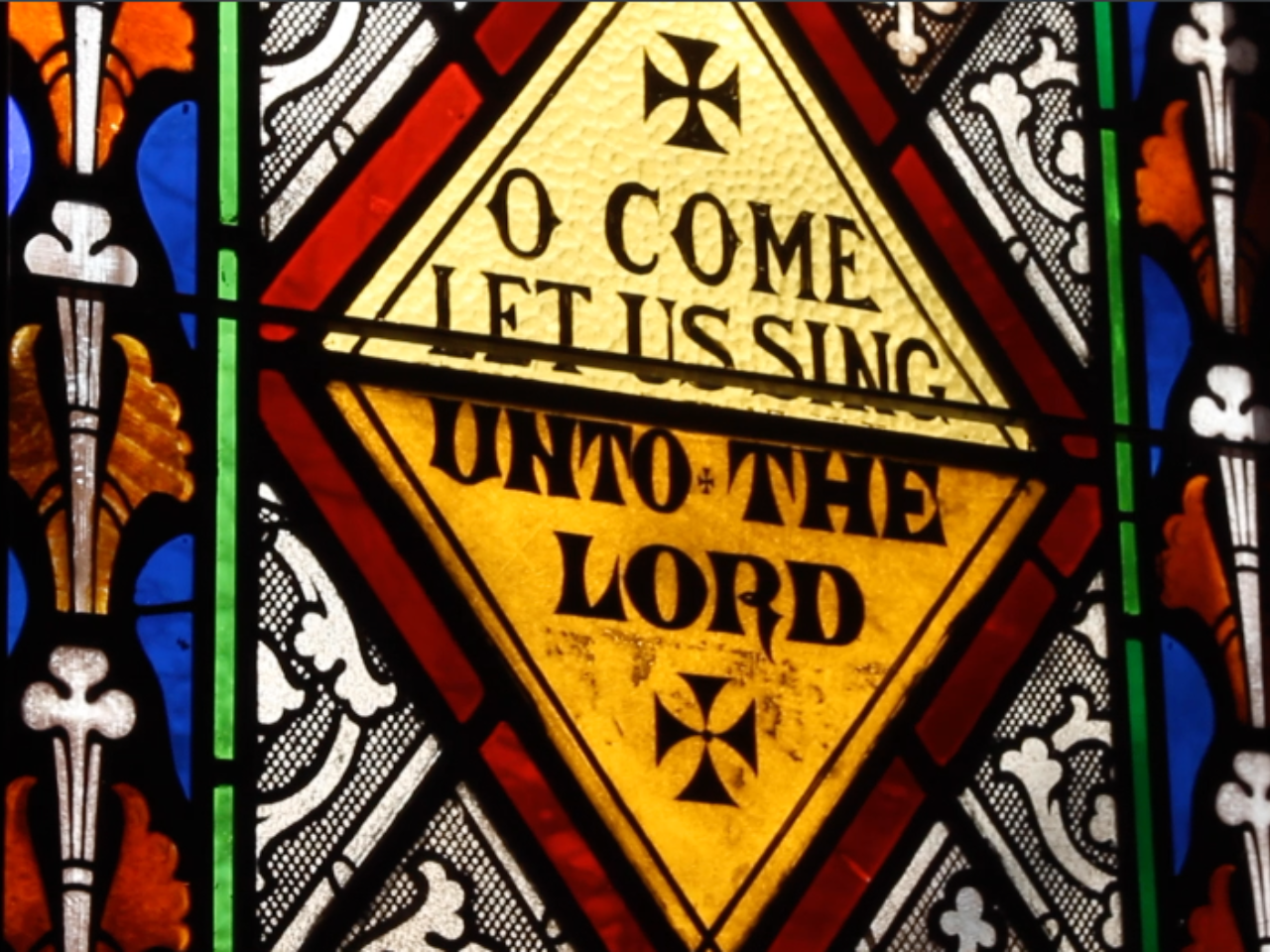
GOOD FRIDAY – APRIL 18
NOON – Liturgy of Good Friday, with special music at the Adoration of the Cross, livestreamed
1:30 PM – Stations of the Cross for Children
1:30 PM – Stations of the City (meet in the lobby for a walking prayer tour of the city)
7 PM – Liturgy of Good Friday
On Good Friday the removal of decorations from the church is echoed in the relative quiet of the whole service, which make such music as there is all the more concentrated.
One of only a handful of hymns actually mentioned by name in the Book of Common Prayer is ‘Pange lingua gloriosi proelium certaminis’ (translated as ‘Sing, my tongue, the glorious battle’ [166]), traditionally sung during the Veneration of the Cross on Good Friday. This great hymn was written by the Merovingian court poet Venantius Fortunatus, author also of ‘Salve festa dies’ (‘Hail thee, festival day’ [175]) and ‘Vexilla regis prodeunt’ (‘The royal banners of our King’ [162]).
The Hymnal text is a close translation of about half of the original, focusing the hymn specifically upon the scene of the Passion. Of particular note in the Hymnal selection are not only the reference to Our Lord’s pierced side with all its sacramental resonances, followed by the magnificent couplet ‘earth, and stars, and sky, and ocean / by that flood from stain are freed’, but also what is in many ways the most striking part of the hymn: the extended apostrophe to the cross itself. This at first seems odd: though it is common enough in the Scriptures to call upon trees, rivers, rocks, hills, mountains – indeed, all of creation – to praise God, we practically never find such an address to a human-made object.
But the hymnist, following an ancient tradition that a scion of the Tree of Life provided the wood for the Cross, among other things, repeatedly addresses the cross as a living tree, one chosen by the Creator. And thus we can call the cross, created and chosen by God, ‘faithful’, and invite its tender care for Our Lord. This image is all the more powerful given the earthly purpose of a cross: the hideous torture and execution carried out by the Roman authorities and by empires and armies, occupiers and rebels, governments and corporations, mercenaries and marauders, throughout history and in our own day. While being mindful of both victims and perpetrators of violence, we give thanks that this implement of death has been transformed by Our Lord’s own actions into an instrument of life.
Though ‘Pange lingua’ is used liturgically in several ways and is associated with a classic plainsong tune, probably better known today is ‘O sacred head, sore wounded’, not least on account of its own fine tune, written possibly by Hans Leo Hassler and used by musicians from Bach to Paul Simon. The original Latin text, ‘Salve caput cruentatum’, was written perhaps in the thirteenth century, and freely translated into German by the great seventeenth-century hymnist Paul Gerhardt; the present English text is another free interpretation by Robert Bridges, sometime English poet laureate and promoter of hymnody.
This Latin hymn (supplemented by scriptural verses) also forms the basis of a cycle of seven cantatas entitled Membra Jesu nostri, written in 1680 by the great German composer Dieterich Buxtehude. The St David’s Choir, with strings and soloists, will sing the last of the seven pieces, addressed to the Face of Christ. Buxtehude’s rich harmonic language highlights the deeply devotional nature of this text.
At noon on Good Friday the St David’s Choir, with strings, harpsichord, and soloists, present the last of a set of seven cantatas addressed to Christ on the cross written by the great German Baroque composer Dieterich Buxtehude. The rich harmonies vividly portray a text of deep devotion and prayer as we meditate on Christ’s saving work.
Watch a clip from last year’s Liturgy of Good Friday which included Buxtehude's third cantata reflecting on Jesus' nail-pierced hands.





Login To Leave Comment